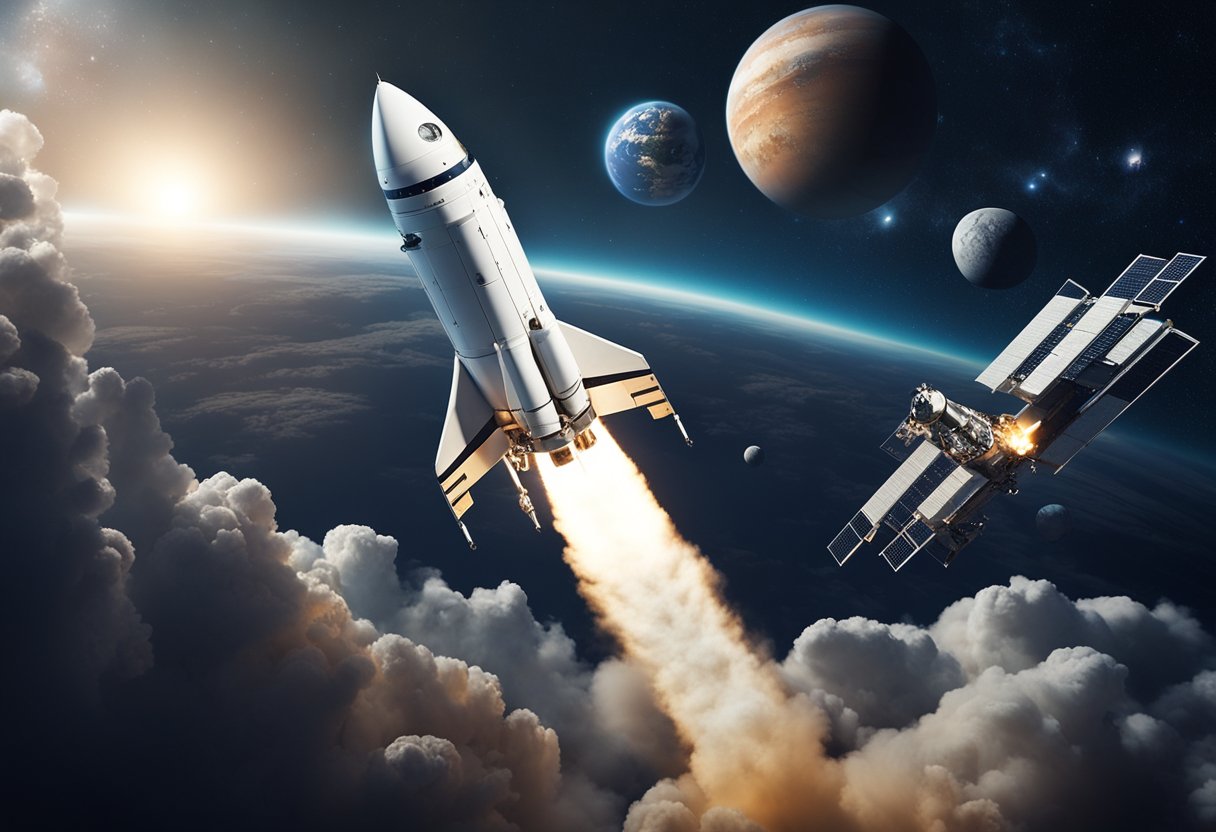
Space Exploration Public Interest Trends: As we look to the stars, public interest in space exploration has soared to new heights. The allure of the unknown and the boundless opportunities presented by the cosmos have captured our collective imagination. Recent years have witnessed a resurgence in curiosity and enthusiasm towards space, fuelled by landmark events like the stunning visuals from the James Webb Space Telescope, and the escalation of a new space race among private companies. This intensifying engagement is a testament to our enduring fascination with space and desire to understand our place in the universe.
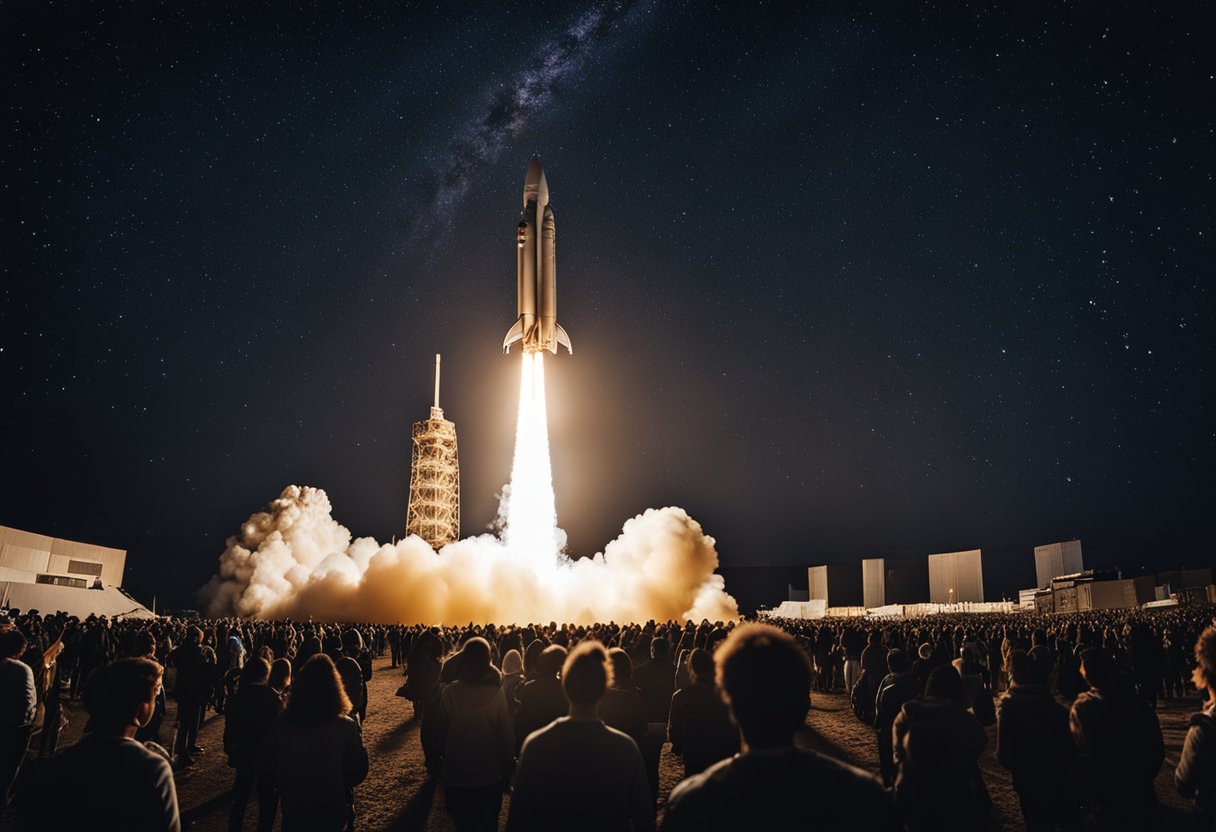
This surge in public attention coincides with significant advancements in technology and growing involvement of commercial entities in space endeavours. As the space industry expands, the economic and societal impacts become more profound, ranging from the prospects of space tourism to the implications for global security and defence. Our appreciation of space has evolved, recognising not just the awe-inspiring aspects of exploration but also its practical benefits and the intricate international partnerships that it necessitates.
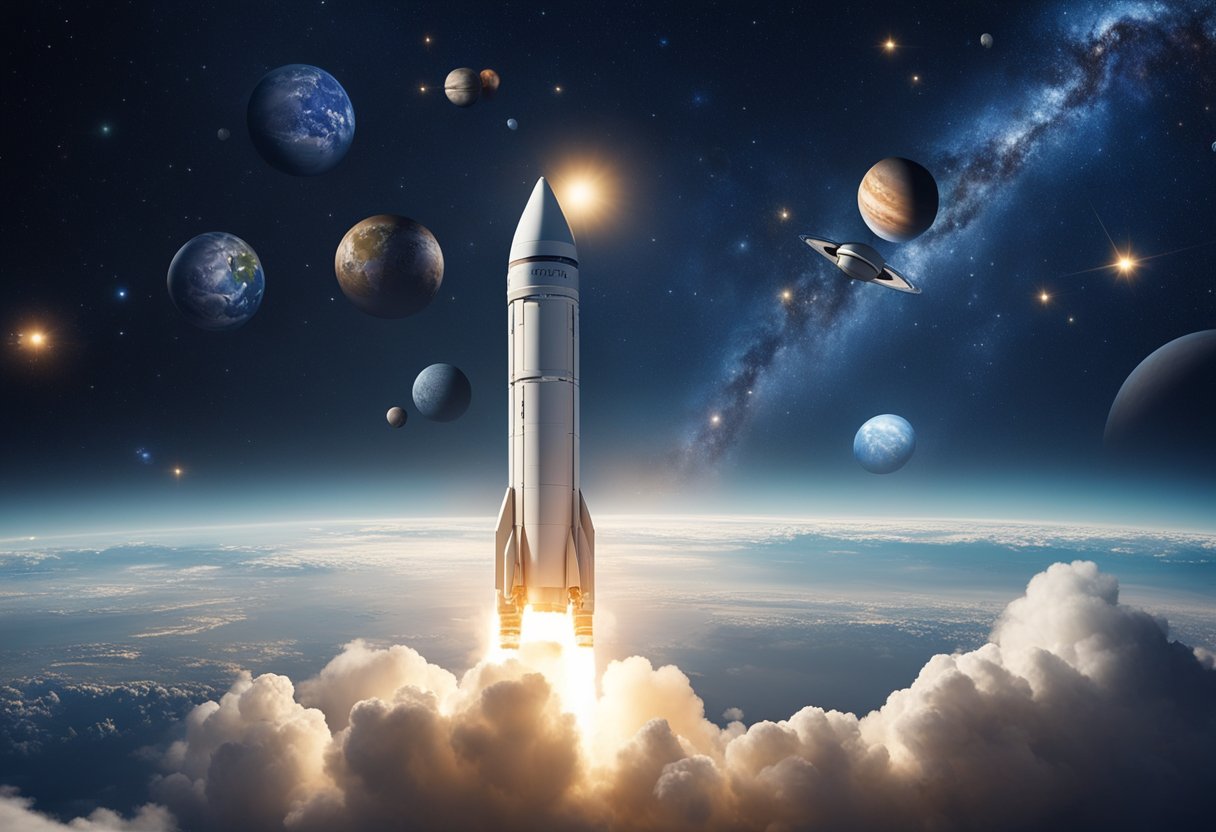
Before delving into specific events, we must acknowledge the enormous impact that the space race and significant space missions have had on the development of our global society. These milestones not only advanced our scientific knowledge but also shaped international relationships.
The space race, which began in the mid-20th century, primarily involved the US and Russia (then the USSR) competing to achieve major milestones in space exploration. This period was marked by extraordinary feats and was propelled by the geo-political rivalry between the two superpowers. Russia made the first historic move with the launch of Sputnik, the first artificial satellite, in 1957. The US responded by establishing the National Aeronautics and Space Administration (NASA) in 1958 and intensified their efforts, ultimately leading to the Apollo 11 moon landing in 1969.
In the ensuing years, the legacy of the space race continued to influence space exploration efforts. It led to a higher degree of international cooperation, exemplified by projects like the International Space Station (ISS). Our ambitions have grown, and now countries such as China and India have become noteworthy players in space exploration, each pushing forward with their own significant achievements.
Sputnik 1: Launched 1957; First artificial satellite
Apollo 11: Landed 1969; First manned Moon landing
Viking 1: Landed on Mars 1976; First Martian lander
Chandrayaan-1: Launched by India in 2008; Discovered water molecules on the Moon
Subsequent milestones include the launch of the Hubble Space Telescope in 1990, which provided unprecedented views of the universe, and China’s Chang’e programme, which achieved the first soft landing on the Moon’s far side in 2019. In the realm of commercial space exploration, companies are making headway, such as the plans documented on SpaceVoyageVentures.com, which showcases the burgeoning field of space tourism and its potential for public participation in space exploration.
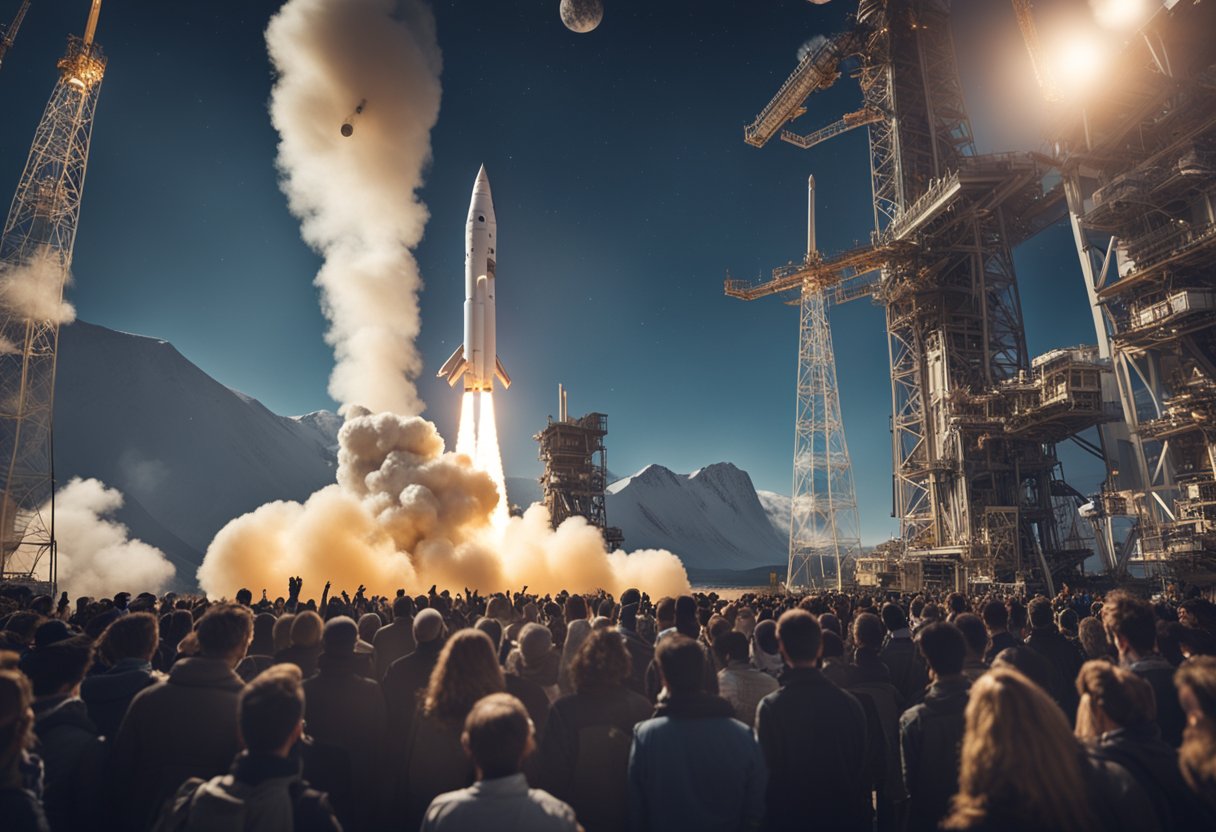
We are currently witnessing a significant surge in the public’s interest in space exploration influenced by various factors, including media portrayal and changing global sentiments.
Media and pop culture have tremendously amplified public enthusiasm towards space initiatives. Groundbreaking events like the release of images from the James Webb Space Telescope have captured the world’s imagination. Likewise, the entertainment industry, through films and television series, often spotlights space themes, underlining the thrill and potential of cosmic ventures. This perpetual media coverage not only sparks curiosity but also keeps space exploration firmly in the public eye.
The Pew Research Center indicates a strong global inclination for maintaining the U.S. as a leader in space exploration. Our world is increasingly attentive to the commercial and scientific strides made in space, seeing them as beneficial for the future. Furthermore, emerging space tourism ventures, such as those detailed on SpaceVoyageVentures.com, are stoking public interest by turning the dreams of space travel into a near-future reality for consumers. Trends suggest that as these opportunities near availability, public enthusiasm will likely continue to rise.
In addressing the complexities of space exploration, we recognise the pivotal role government agencies play in advancing the frontiers of science and technology. The commitment to exploring beyond our planetary boundaries has seen an increased dependence on these entities for leadership and direction.
NASA remains at the forefront of space exploration endeavors. We note the agency’s ongoing projects including the Artemis programme, aiming to return humans to the Moon, and the Perseverance Mars Rover’s quest for signs of past microbial life. These bold missions underscore NASA’s role in expanding our understanding of the cosmos.
At the helm of international space cooperation, the European Space Agency (ESA) collaborates closely with NASA. We observe their joint missions, such as the James Webb Space Telescope, which serve as a testament to the synergy between agencies. Such alliances are critical not only for poolingscientific and financial resources but also in ensuring the peaceful use of outer space.
International partnerships extend beyond civilian agencies, involving the Department of Defense and efforts towards national security. Our stance on collective space initiatives reflects a preference for diplomacy over competition, echoing the need for universal regulations to govern space exploration and utilisation.
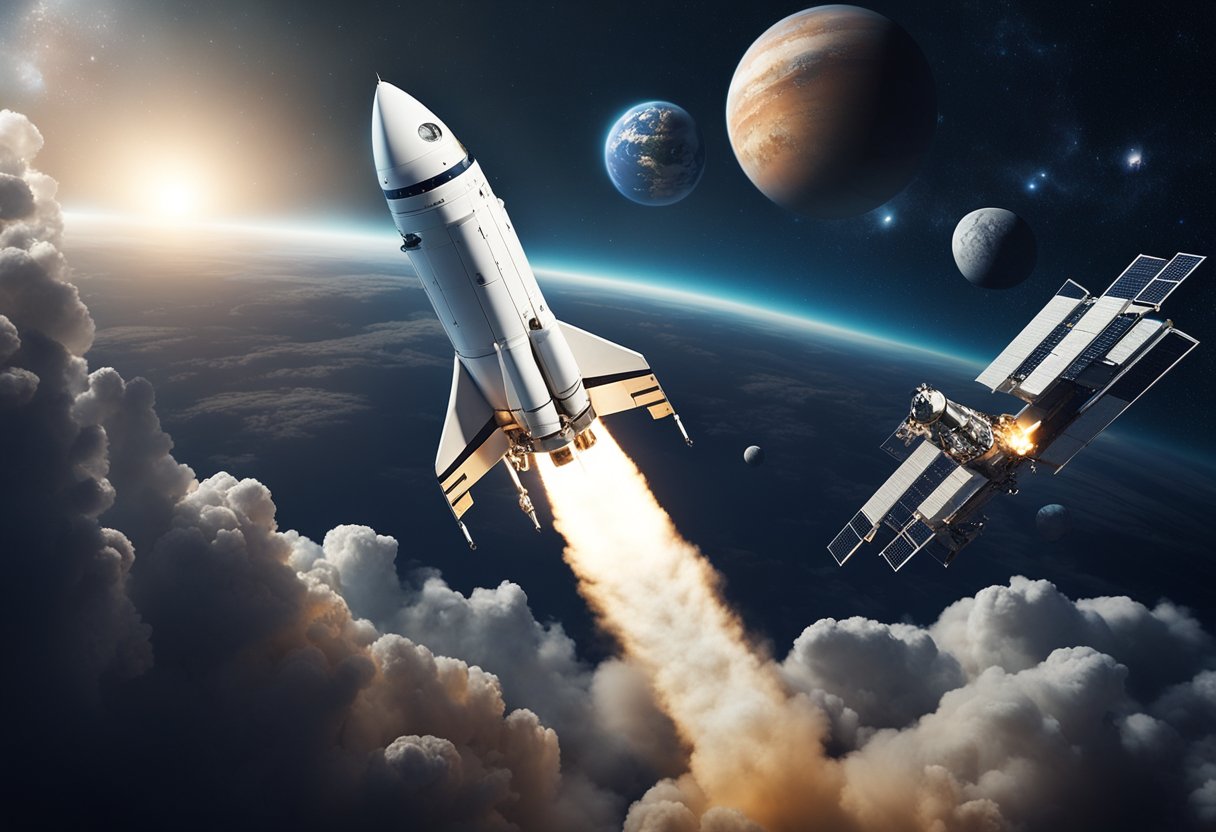
The commercial space sector has experienced significant expansion, with private companies leading the charge in space exploration and innovation. We now witness a landscape where governmental space agencies collaborate with private entities, each vying to push the boundaries of what is possible.
SpaceX, founded by Elon Musk, has been a key player in reducing space travel costs and increasing access to space through reusable rocket technology. Their Starlink project aims to deliver global internet coverage using a constellation of satellites. Similarly, Blue Origin, under Jeff Bezos’ direction, focuses on suborbital spaceflight services, with ambitions to penetrate the orbital spaceflight market. Virgin Galactic, pioneered by Richard Branson, is forging paths in space tourism, offering the public unique suborbital experiences.
Innovation within the commercial space sector is thriving, with numerous new entrants seeking to carve their niche. These entities are not only improving the technology and infrastructure of space travel but also contributing to space’s economic viability. One such example is the burgeoning field of space tourism, encapsulated by ventures like SpaceVoyageVentures.com, which provides insight into current and forthcoming space travel opportunities. The private sector’s role is increasingly prominent, crafting a diversified and competitive environment that stimulates continuous innovation.
In this section, we explore the significant strides made in satellite technology and reusable rocket systems, which are central to the evolution of space exploration.
The advancements in satellite technology have been profound, with innovations leading to more sophisticated and capable devices in orbit. One significant development is the creation of 3D-printed satellites. This method reduces both manufacturing time and cost, while also allowing for intricate designs that were previously difficult to achieve. These satellites contribute to a multitude of areas, including communication, earth observation, and scientific research, all while being supported by enhanced artificial intelligence (AI) capabilities, which enable autonomous decision-making and data processing.
Reusable rocket systems represent a monumental shift in space industry economics. By allowing rockets to be recovered and launched again, companies like SpaceX have dramatically lowered costs associated with access to space. Engineering innovations within these systems have enabled rockets to land themselves on sea-based platforms or return to their launch pads. This breakthrough not only makes spaceflight more sustainable but also opens up new possibilities for frequent and less expensive missions, whether they are for commercial, scientific, or space tourism purposes, such as those offered by SpaceVoyageVentures.com.
The collaborative efforts in engineering and technology have undoubtedly accelerated our capabilities in space exploration, making what was once science fiction a tangible reality. Through the utilisation of advanced materials, improved propulsion technologies, and intelligent systems, we are broadening our horizons and reimagining what’s possible beyond our planet.
In assessing the economic impact of space exploration, we consider two critical areas: space tourism with its burgeoning potential and the extensive investments propelling space technology forward.
Space tourism is no longer the stuff of science fiction but an emerging sector with significant economic promise. With ventures like SpaceVoyageVentures.com, the anticipation around space travel for leisure purposes grows. Our current endeavours into space tourism not only spark public interest but also signal the opening of new revenue streams. The ticket sales for suborbital flights and reservations for potential orbital hotels contribute to this nascent industry’s projected multibillion-pound impact on the economy.
Investment in space technology has seen a dramatic uptick. Public and private sector financing is fuelling groundbreaking innovations and infrastructure. For instance, satellite communications and earth observation businesses are flourishing, thanks to the capital injection into the space industry. Our space spending is not only a testament to human curiosity but also a driver for economic growth. It bolsters high-tech job creation and stimulates related sectors, proving to be a catalyst for broad economic development.
In this section, we explore the intricate relationship between national defence priorities and space initiatives. We address how space has evolved into a critical theatre for modern warfare, with security strategies being designed to protect national interests beyond Earth’s atmosphere.
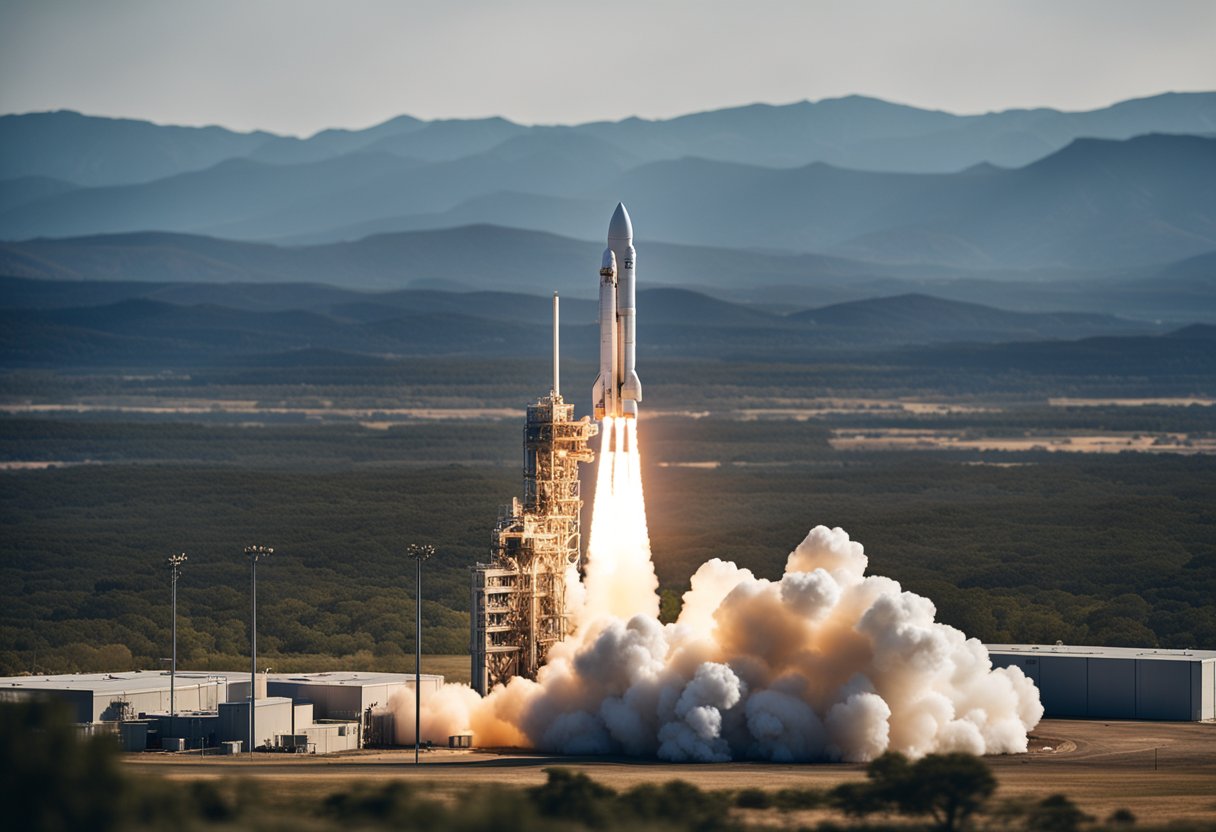
National defence has extended its reach into space, recognising it as a crucial domain for security. Governments are actively developing space strategies, acknowledging the importance of satellites for communication, navigation, and reconnaissance. The United States has published a thirty-year strategy highlighting the necessity of securing assets in space, indicative of the long-term nature of space security. These strategies often encompass the development of advanced technologies to safeguard these assets from threats and maintain a competitive edge in space.
Key Components of National Space Defence Strategies:
Space has transformed from a frontier of exploration to a potential battlefield. Adversaries recognise the value of space for national security, leading to the development of counterspace capabilities. The Defense Intelligence Agency has outlined various threats to space systems, with nations like China and Russia advancing their space and counterspace efforts. The incorporation of space in defence strategies has led to a shift in the paradigm, treating space as a vital domain for national defence.
Trends in Space Warfare:
In our analysis, we must also touch on commercial developments that intersect with these defence interests. Companies like SpaceVoyageVentures.com are pioneering space tourism, which presents new variables to the security and defence equations. As space becomes more accessible to civilians, national strategies will need to adapt to protect these burgeoning commercial interests alongside government defence assets.
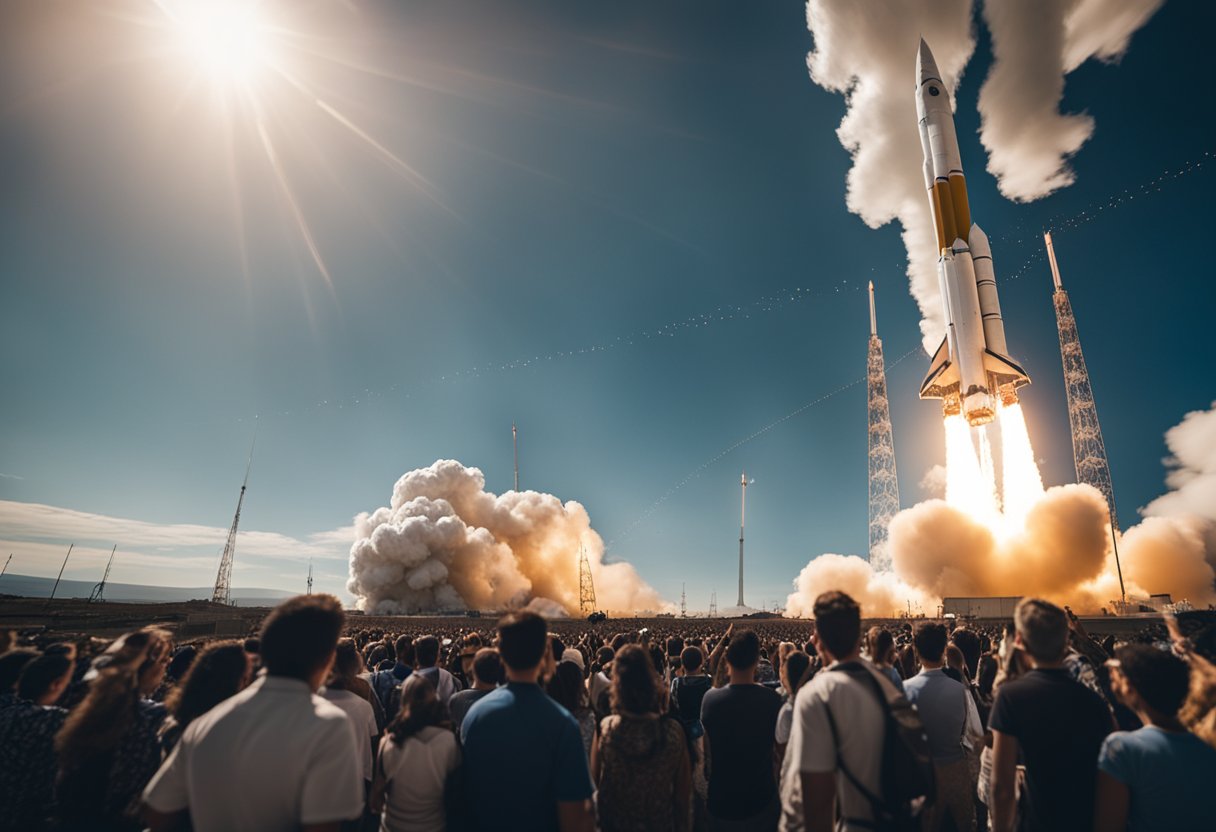
Space exploration has facilitated numerous societal benefits, particularly in the realms of climate monitoring and earth observation, while also presenting risks like space debris which require vigilant management.
Our understanding of climate change has been significantly enhanced by advancements in space exploration. Utilising satellites, we have developed sophisticated Earth observation technologies that consistently monitor the planet’s climate systems. These provide us with critical data, enabling us to track weather patterns, measure atmospheric changes, and observe environmental transformations over time. This continuous stream of information is pivotal for predicting natural disasters, improving agricultural practices, and informing policy decisions related to climate change mitigation and adaptation.
As we launch more satellites and spacecraft, the challenge of space debris mounts. This accumulation comprises defunct satellites, spent rocket stages, and fragments from disintegration or collisions. It poses a considerable risk to operational satellites, the International Space Station, and future missions. Our sustainability in space necessitates implementing debris tracking systems and removal mechanisms. Moreover, establishing comprehensive guidelines and policies is crucial for maintaining the long-term usability of Earth’s orbital environments.

We recognise the critical role that international collaboration plays in advancing space exploration. Robust partnerships contribute significantly to the mutual benefits of space-faring nations.
The International Space Station (ISS) is a testament to the power of international cooperation in space. We’ve seen partner nations such as the United States, Russia, Japan, and Canada, along with member nations of the European Space Agency (ESA), work together to maintain and utilise this unique orbital laboratory. The ISS serves not only as a scientific platform but also as a symbol of peaceful and productive collaboration between countries, often including efforts from China and India to advance our collective knowledge.
Engaging in global partnerships and space diplomacy allows us to strengthen relationships and align our interests with those of other nations. Countries like the United States are not only participants but also crucial driving forces behind initiatives that foster a spirit of partnership. These cooperative efforts range from agreements governing the responsible use of space to joint missions aimed at exploring deeper into our solar system. Our alliances extend beyond traditional space powers, integrating new partners and fostering a sharing of resources and expertise on an international scale. The emergence of entities like SpaceVoyageVentures.com highlights the growing interest and potential for public involvement in space through avenues such as space tourism, showcasing how international cooperation can extend to new industries.
In the coming years, we can anticipate significant advancements in space exploration, with a focus on ambitious missions and the quest for life beyond our planet.
We’re on the cusp of a new era with plans for human missions to Mars. The international space community, including private sector players, is working rigorously to overcome the challenges of interplanetary travel. Infrastructure development, such as habitats and life support systems, is crucial, and we’ve observed a surge in collaborations to facilitate a sustainable human presence on Mars. Moreover, lunar missions are often perceived as stepping stones, helping us to trial technologies and understand the harsh space environment better. Our moon serves as a testbed for the long-term goal of reaching Mars and potentially further into the depths of our solar system.
The age-old question “Are we alone in the universe?” remains a driving force for many space missions. Sophisticated rovers and orbiters are being sent to Mars with the intent to uncover signs of past life, examining the planet’s geology and climate for habitability clues. Concurrently, telescopes and probes venture far beyond Mars, scrutinising distant moons and exoplanets. We aim to identify “biosignatures” or signs of life by analysing atmospheres and surface compositions. The endeavours into the search for extraterrestrial life require immense international cooperation, pulling expertise from various countries and sectors to advance our understanding of life’s potential spread across the cosmos.
The space sector is buzzing with these activities, igniting public interest and showing promise for the likes of SpaceVoyageVentures.com, which offers insights into not only the potential for future space tourism but also milestones we’re already approaching. Our journey into space continues to captivate our collective imagination, pushing the boundaries of what we believe is possible. It is an exciting time for us as we forge our path in the vast expanse of space.
As we venture further into the cosmos, the dual priorities of innovation and sustainability become critical. These not only shape the technologies and strategies for space exploration but also ensure the protection of the space ecosystem.
In pursuing the long-term viability of space travel, we focus on advancements that bolster resilience against risks such as space debris. The RemoveDEBRIS initiative is a prime example of innovation directly addressing this threat. It demonstrates cutting-edge approaches to capturing and disposing of space junk, which is vital for the future cleanliness of our orbital pathways. Moreover, the development of spacecraft capable of withstanding the harsh conditions of space, including wide temperature variations and cosmic radiation, plays a significant role in ensuring the safety and durability of interstellar voyages.
When it comes to promoting sustainable practices in space, we must consider both the technologies we employ and the impact on the climate change narrative back on Earth. Investment in sustainable space technologies, such as those optimising energy use and resource allocation, ensures that our galactic footprint is minimised. SpaceVoyageVentures.com provides insight into how space tourism might grow in harmony with environmental concerns, outlining possible future trips that are on the cusp of availability.
By integrating sustainability into the core of space exploration, we seek to maintain the balance of our delicate space ecosystem while forging new paths among the stars.
In this section, we address commonly posed queries regarding the dynamics of space exploration and the shifting patterns of public engagement.
The space industry is witnessing a surge in private enterprises entering what many call a new space race. This shift offers potential for innovative services such as space tourism, alongside advances in satellite technology and deep space exploration.
Public interest has been reignited thanks to groundbreaking missions and advancements such as the images from the James Webb Space Telescope. There is growing enthusiasm around moon landings, and India’s recent proximity to the moon’s south pole is a testament to this.
Space exploration yields significant scientific knowledge, drives technological advancements, and contributes to Earth-based industries through the development of new materials and processes. It also galvanises educational endeavours and international collaboration.
The public’s opinion on space travel is influenced by factors like the visibility of space projects, perceived benefits versus costs, and the extent of media coverage. The advent of private companies in space missions has also shaped public perception.
Recent developments include the successful launch of new telescopes, the planning and initiation of Mars colonization projects, and the growth of the space tourism industry. These are landmarks highlighting human progress in space technology.
The privatisation of space exploration introduces increased efficiency, innovation, and the potential for reduced costs. However, it also raises questions about the access to space resources, regulatory oversight, and prioritisation of scientific goals versus profit motives.